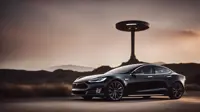Renewables could meet full US power needs by 2030
13 Dec 2012
In a new assessment of the US electric grid, the University of Delaware suggests that by 2030 the US would realistically be able to rely almost exclusively on renewable energy and storage systems. The researchers also suggest the landmark could be reached without raising power costs, a claim which will, no doubt, come as surprising given the common perception of the problems with renewable energy.
According to most energy sector analyses, renewable energy sources remained far too expensive for widespread adoption, and especially for replacement of existing coal-fired, gas-fired and nuclear power plants.
However, the researchers at the University of Delaware, in association with a team from the Delaware Technical Community College, believe that many of the issues facing renewables could be addressed with a different emphasis.
In an effort to find ways to economically harness renewable energy technologies, the researchers created a computer model to consider a wide array of different energy sources, locations and, crucially, energy storage systems.
The programme was focused on the grid operated by PJM Interconnection, covering around a fifth of the country's power network from New Jersey to Illinois. The model looked at 28 billion different arrangements using meteorological and demand data from the past four years and concluded that what the clean energy industry needed was a shift in outlook with less focus on wasted energy.
Current energy storage technologies are significantly more expensive than renewable energy systems like wind turbines and solar panels, the technologies suggested by the model to provide the most likely option for economical adoption.



.webp)
.webp)

.webp)
.webp)

























